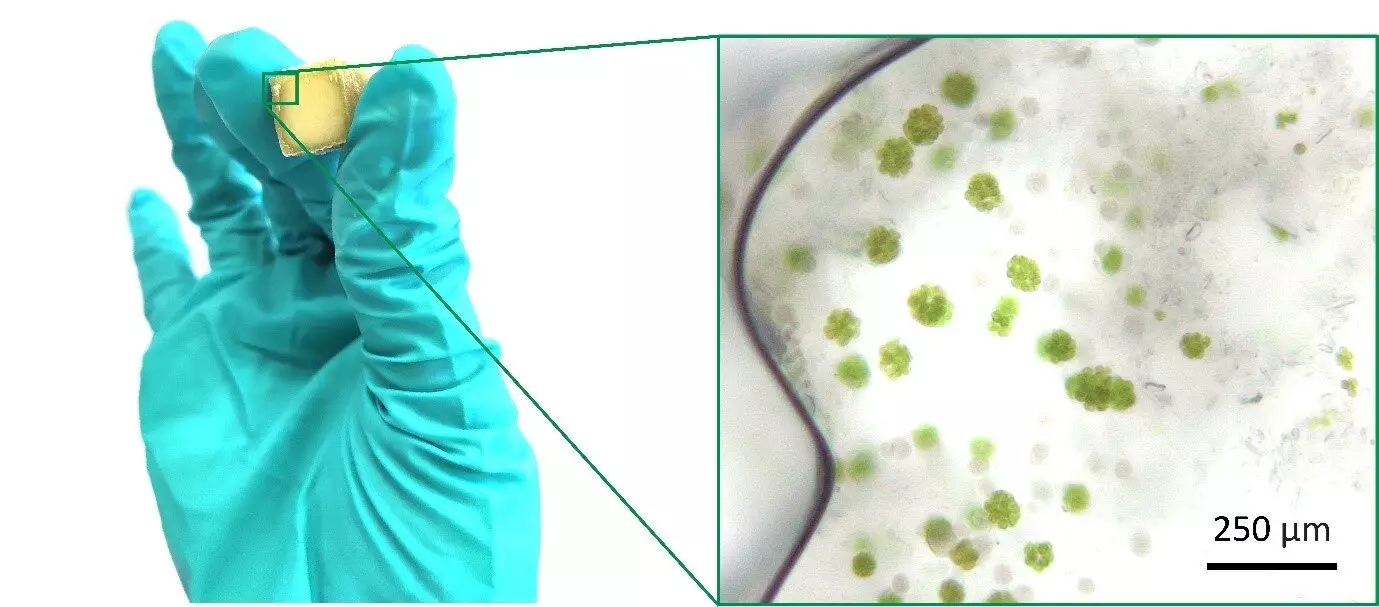Scientists from TU Delft have made significant progress in understanding the optimal growth conditions for confined microalgal cells in photosynthetic engineered living materials. These materials have the potential to revolutionize various industries, from CO2 capture to the development of oxygen sources for biological tissues. In a recent publication in Advanced Materials, the team led by Marie-Eve Aubin-Tam and Kunal Masania presents their findings and highlights the importance of designing materials that promote efficient cell growth and functionality.
Understanding Photosynthetic Living Materials
Photosynthetic living materials are a new class of engineered materials that leverage organisms capable of photosynthesis to convert CO2 from the air into energy, sugars, and oxygen. By studying the growth and behavior of microalgae within these materials, researchers hope to unlock their full potential for various applications. Aubin-Tam explains that the team focused on materials that support active photosynthesis by algae. This research is particularly relevant in the context of organ transplants, where the artificial engineering of biological tissues requires a reliable oxygen supply for cell growth.
One of the main obstacles preventing the widespread use of engineered living materials is the lack of control over cell growth. To address this challenge, the team investigated the impact of material shape, light exposure, and nutrient availability on cell growth. Their results demonstrate that cells predominantly grow along the edges of the material, where they have better access to air and light. This finding aligns with nature, as the structure of the materials mirrors the leaf of a plant – thin with a large surface area to maximize sunlight exposure.
The Role of Light and CO2 Accessibility
The researchers highlight the importance of accessibility to light and CO2 for optimal cell growth. They found that introducing a small opening for gas exchange significantly improved cell growth in the inner layers of the material. However, this came at the cost of accelerated dehydration, which is detrimental to cell viability. Drawing parallels with nature once again, the researchers note the resemblance to stomata on leaves. These small openings allow gas exchange while preventing excessive water loss. Similar mechanisms that respond to a shortage of CO2 could enhance the longevity and efficiency of photosynthetic living materials in the future.
Designing New Materials and Ink
To study the impact of material shape on cell growth, the team had to develop a new composition for the ink used in 3D printing. Aubin-Tam’s group at the faculty of Applied Sciences focused on investigating cell growth, while Masania, from the faculty of Aerospace Engineering, contributed to the development of a new 3D printable ink. Working alongside Elvin Karana from the faculty of Industrial Design Engineering, they explored the possibilities of creating larger and more complex objects using living photosynthetic materials. This collaboration between different faculties highlights the interdisciplinary nature of the research and its potential for real-world applications.
The research conducted by the TU Delft team sheds light on the importance of understanding and controlling cell growth within engineered living materials. The findings have significant implications for the development of materials that can efficiently deliver oxygen to biological or engineered tissues, addressing a critical need in organ transplantation and tissue engineering. By mimicking natural structures, such as the leaf, and optimizing accessibility to light and CO2, researchers can enhance the longevity and overall efficiency of photosynthetic living materials.
The study of cell growth within photosynthetic living materials represents a crucial step towards harnessing their full potential. With their ability to convert CO2 into energy and oxygen, these materials hold great promise for various applications ranging from CO2 capture to tissue engineering. Through the interdisciplinary collaboration of researchers from different faculties, advancements in ink composition and material design are paving the way for the future development of larger and more complex objects. Overall, the research conducted by the TU Delft team brings us closer to unlocking the transformative power of photosynthetic living materials.


Leave a Reply